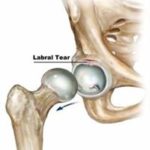What Conditions Does Sports Physiotherapy Treat?
Before we get into the nuts and bolts of specific conditions, let’s talk about the big picture. Sports physiotherapy isn’t your run-of-the-mill treatment plan. It’s a tailored approach that targets movement, function, and overall recovery all while aiming to reduce pain and prevent future injuries.
And no, you don’t need to be a full-time athlete to benefit. This type of therapy is designed for anyone dealing with musculoskeletal issues due to physical activity or repetitive motion. If you’re wondering whether it’s right for you, keep reading.
What Conditions Does Sports Physiotherapy Treat? Let’s Break It Down
- Acute Sports Injuries
These are the “Ouch, that wasn’t supposed to happen!” moments. Sports physio handles:
- Sprained ankles
- Pulled hamstrings
- Rotator cuff injuries
- ACL tears
- Fractures and dislocations
Early treatment can seriously speed up recovery and reduce long-term damage. The goal? Get you moving again, safely and confidently.
2. Chronic Conditions and Overuse Injuries
Sometimes it’s not one big moment, but a buildup of wear and tear. Sports physiotherapy is gold when it comes to:
- Tendinitis (like tennis elbow or jumper’s knee)
- Shin splints
- Plantar fasciitis
- IT band syndrome
- Chronic lower back or shoulder pain
Overuse injuries are sneaky. They creep in slowly and stick around like an uninvited guest unless, of course, you show them the door with the right treatment.
3. Post-Surgical Rehab
Gone under the knife? Whether it was for a torn ligament or joint replacement, sports physiotherapy plays a massive role in regaining strength and function post-surgery.
- Knee or hip replacement
- Meniscus or cartilage repair
- Shoulder reconstructions
Rehabilitation focuses on mobility, balance, and strengthening muscles that may have weakened during recovery.
4. Joint and Ligament Conditions
It’s not always about the muscles. Ligaments and joints need love too.
- Frozen shoulder
- Joint instability (especially in the knees, hips, and shoulders)
- Hypermobile joints
- Osteoarthritis (especially in active individuals)
And yes, sports physiotherapy often works hand-in-hand with other therapies like dry needling, manual therapy, or even hydrotherapy.
5. Spinal Issues
Bet you didn’t expect this one! But yep, the spine gets plenty of attention in sports physio:
- Sciatica
- Disc herniations
- Postural dysfunction
- Whiplash injuries
With guided exercises and targeted treatments, pain relief and better alignment are well within reach.
Who Can Benefit From Sports Physiotherapy?
You might be surprised at how wide the net is. Here’s who can benefit from sports physiotherapy:
- Professional and amateur athletes
- Office workers with repetitive strain injuries
- Older adults trying to stay active
- Teenagers in school sports
- Gym-goers who’ve overdone it
Basically, if you move (and occasionally overdo it), you’re a candidate.
Key Techniques Used in Sports Physiotherapy
Let’s lift the curtain on what actually goes down during a session. It’s not just stretching and ice packs, my friend. Here are some core techniques:
Manual Therapy
Think hands-on techniques to mobilize joints, reduce pain, and improve flexibility.
Therapeutic Exercises
These are tailored routines aimed at building strength, stability, and endurance.
Electrotherapy
Modalities like TENS, ultrasound, and shockwave therapy help stimulate healing.
Taping and Bracing
Used to support injured joints or guide movement patterns.
Education and Prevention
Because knowledge is power and it prevents you from making the same mistake twice!
How Long Does Recovery Take?
Ah, the million-dollar question. Truth is, there’s no one-size-fits-all answer. Recovery time depends on:
- The type and severity of the injury
- Your commitment to therapy
- Any underlying conditions or past injuries
But here’s the thing: consistent physiotherapy often results in faster healing than rest alone. So if you’re the impatient type, it’s definitely worth the investment.
FAQs About Sports Physiotherapy
- What’s the difference between sports physiotherapy and regular physiotherapy?
While both deal with injury and rehab, sports physio is more focused on athletic performance, biomechanics, and injury prevention in active individuals.
- Do I need a referral to see a sports physiotherapist?
Usually, no. You can book directly. But check with your insurance provider just to be sure.
- Can sports physiotherapy help with old injuries?
Absolutely! Old injuries can linger for years if not properly addressed. A sports physio can help improve mobility and reduce chronic pain, even years later.
- Is it painful?
Some treatments can be uncomfortable, especially during deep tissue work or stretching stiff areas. But overall, the aim is to reduce pain not add to it.
- How often should I go?
It varies. Acute injuries might require more frequent sessions (2–3 times a week), while chronic conditions may need weekly or bi-weekly visits.
Final Thoughts: Why It’s More Than Just Rehab
So, back to that all-important question: What conditions does sports physiotherapy treat? From sudden injuries to chronic pain, post-surgical recovery to spinal issues, it covers a vast range. And more importantly, it does so with a patient-centered approach that focuses not just on healing but on long-term wellness and performance.
Whether you’re trying to shave seconds off your 10K, get back into yoga, or simply walk without pain, sports physiotherapy might just be the unsung hero in your journey. It’s not just about bouncing back, it’s about coming back better than ever.
So, next time someone asks, “What conditions does sports physiotherapy treat?“ you’ll know it’s not just a simple answer. It’s a whole world of healing wrapped in movement, science, and a touch of magic.











